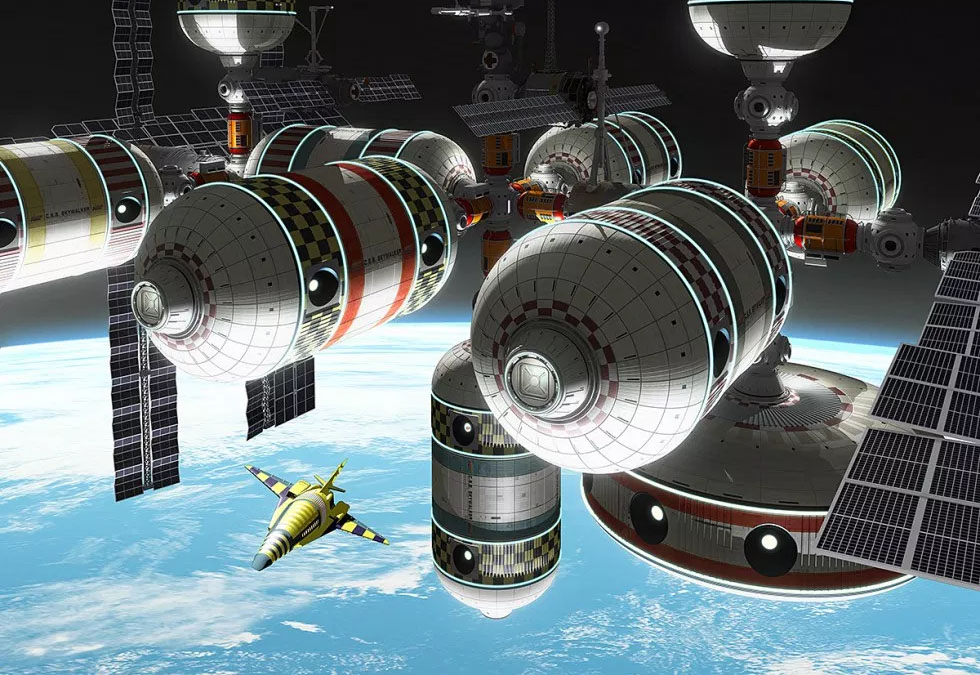why we need a plan to privatize space travel

In the cautious optimism about NASA’s new budget and direction there’s an anticipation of a second and far less political space race, one between space tourism startups and aerospace companies who have their eyes set on space exploration. The hope is that by seeding government contracts for new spacecraft, NASA’s going to get a safe, reliable, and far more cost-effective replacement to the space shuttle by 2014 and maybe, a heavy lifter for manned interplanetary travel some time in the unspecified future. While this is plausible with enough money and enthusiasm on the part of the bureaucrats, and an intensive enough program, there are a few very important things to take into account before we start counting down to the next launch system and an expansive push into orbit driven by commerce, science, and military research and development projects.
Today’s space-oriented startups are ran by people who are focused on making meaningful strides into space and they’re willing to take the necessary risks to turn space exploration into a full blown industry. But the role of private contractors in spacecraft development is far from new. They’ve been working on building all the launch systems requested by NASA since the dawn of the space program. However, the point was to deliver on a set of requirements rather than actually innovate.
There was no incentive to sell the agency on truly risky and unique craft because the underfunded bureaucrats would quickly pull the plug on the project as soon as something went wrong. The few times defense contractors really tried something new, like the DC-X and the X-33 SSTO concepts, NASA shut down the work as soon as the first serious engineering challenges showed themselves during tests. So one might as what’s the point of thinking outside the box if it’s going to remain a hangar queen at best or a neat sketch on a drawing board at worst?
Trying to create competition between high brow concepts rather than just who can fulfill a laundry list of highly specific requirements faster and cheaper is a major game changer, and it’s exactly what the agency needs to be able to return to space before 2015 as per the original goal of Constellation. But the budget allotted for the seeding of the space exploration industry is far from impressive, just $6 billion over five years. With every test launch requiring tens of millions in equipment and work, as well as millions upon millions in the intervening construction and proofs of concept, there’s only so much seeding that NASA can do.
There needs to be more cash available to spur aerospace startups to expand and fund more R&D work. There also has to be a plan to turn whatever concepts will win the competitions and make up the new generation of launch systems into fully fledged, sustainable lines of business. Otherwise, there simply won’t be enough of a return on investment to supply NASA with fresh ideas. Today’s space startups are also very vulnerable. They exist on the promise of a future industry and they need a plan to stay in business for a while. Otherwise, they’ll just be the pet projects of ambitious billionaires and research grants on a deadline.
The space agency’s new direction has to be about more than just exploring new technologies and supporting future flag planting missions. Rather than just treat space tourism companies as vendors, it needs to realize that these contracts to provide new launch systems, inflatable space stations and future heavy lifters need to be a gateway for more and more ambitious future projects drawing in more and more industries and making commercial ventures in space more and more feasible and lucrative.
For now, NASA will hold a lot of power in its hands and those $6 billion could help put SpaceX, Bigelow Airspace and XCOR firmly on their feet, starting the steady trickle of cash flow which could launch new projects and attract global clientele form the scientific, engineering and military realms. Instead of just seeding some projects, the agency could help shape a brand new industry and for that it needs to be ambitious and lobby for bigger funds using the politicians’ language of jobs and economic stimulus. After all, a working space infrastructure could create a lot of jobs for designers, engineers, scientists and even defense experts.
Right now, there’s a chance to do something great in space, but without a long term plan and a steady stream of funding for it, it could be easily squandered and in ten to twenty years, we could be facing another massive gap in our ability to get into space thanks to the lack of will, vision, or foresight from our politicians and their typically self-serving, short-term agendas…





